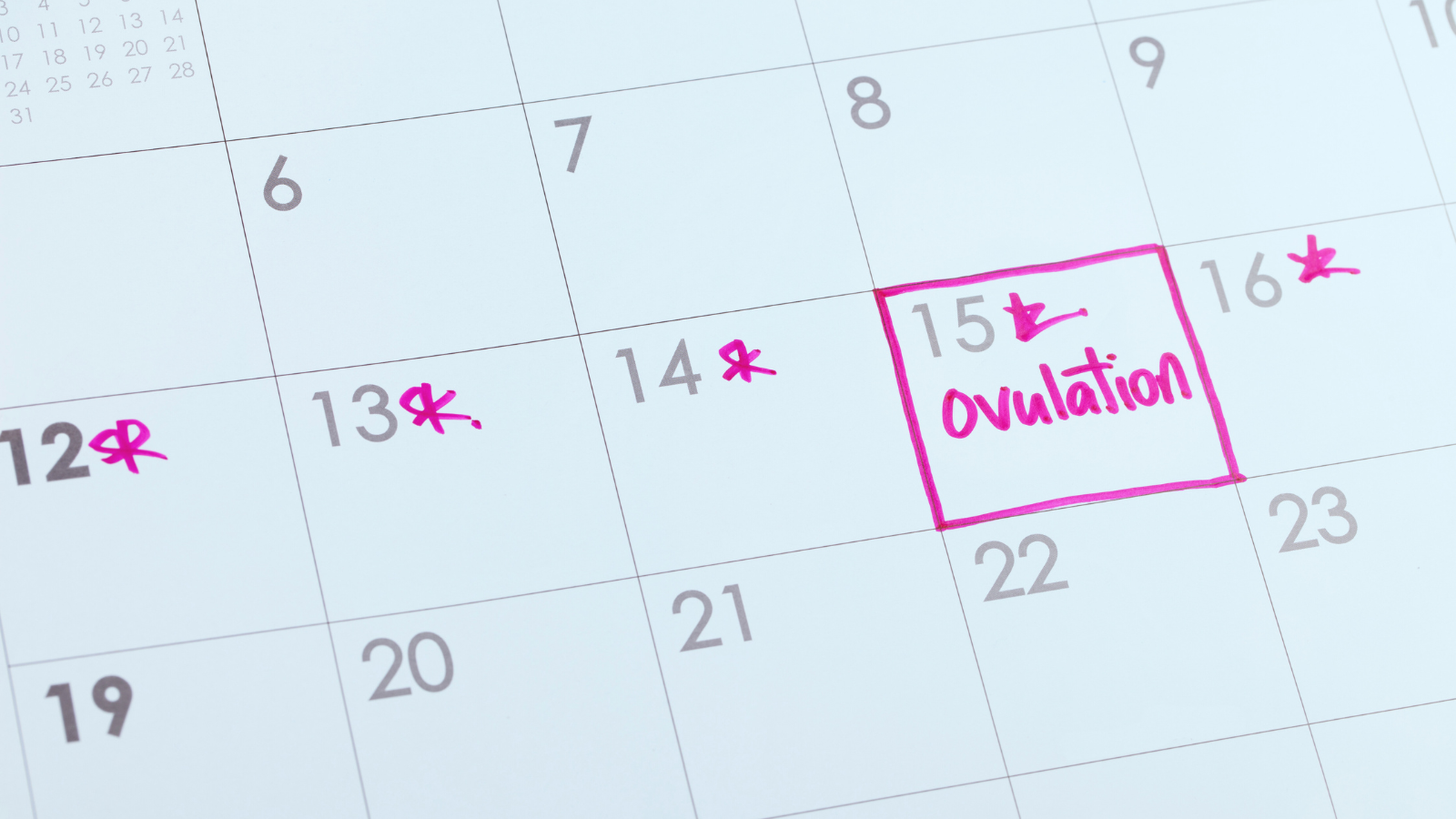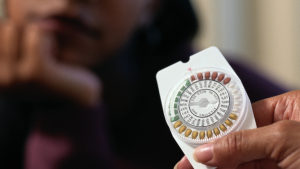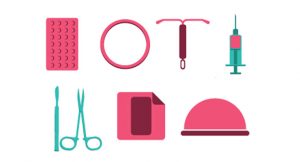
Non-Hormonal Contraception Options
Non-hormonal contraceptive methods fall into a few categories. These include barrier methods and surgical options.



When we talk about contraception, we usual think about things that we can get from our doctors or pharmacists, but the truth is preventing pregnancy can be a simple as changing your behavior.
The only sexual behavior that poses a risk of pregnancy is penis-in-vagina sex. When a partner ejaculates inside of the vagina, the sperm in semen start making their way toward the egg.
If you don’t want to get pregnant, you can avoid penis-in-vagina sex completely, you can avoid it during the most fertile times your cycle, or you can make sure that the penis is pulled out of the vagina before ejaculation.
Behavioral methods can be effective as long as both partners are committed to following through all the time. However, there are many more effective methods available.
It’s also important to remember that unless you avoid all kinds of sex with a partner—not just vaginal sex—these behavioral methods will not protect against sexually transmitted infection (STIs).
Choosing not to have sex is sometimes called abstinence. People may be abstinent for different reasons at different points in their lives. Some people choose to remain abstinent until they are married while others may decide only to not have sex until they’re in a loving, committed relationship. Some people may choose abstinence as a way to avoid pregnancy and STIs while other people may choose it because of their values or their religion.
Your reasons for choosing abstinence will likely determine what kind of sexual activity you will and will not participate in. If you are using abstinence specifically as a pregnancy prevention method, you need to make sure to avoid all penis-in-vagina sex. There are a lot of other ways to be intimate and sexual with your partner without risking pregnancy.
In theory, abstaining from vaginal sex is 100% effective in preventing pregnancy, but a lot of people who intend to use this “method” may end up giving into their desire for sex. That’s okay, as long as you choose a different method of contraception before you have sex.
Instead of avoiding penis-in-vagina sex altogether, some couples rely on withdrawal to prevent pregnancy. Withdrawal refers to pulling the penis out of the vagina before ejaculation. Research on withdrawal shows that if done correctly it is about 80% effective. That is certainly better than using no protection at all, but not nearly as effective as some of the other methods available.
It can be hard for some men—notably teens and young men—to know exactly when they’re going to ejaculate. In the heat of the moment when everything feels so good, they may also have trouble following through on their intention to pull out.
It is also important to know that there may be sperm in pre-ejaculate. Pre-ejaculate or precum are the drops of fluid that leak out from the penis as a person becomes aroused. Research suggests that some men have sperm in their precum and some do not. The problem is that without a microscope it’s impossible to tell which category you or your partner falls into.
Whether you call it natural family planning, the rhythm method, or the calendar method, tracking your cycle and avoiding sex during the most fertile days is one of the oldest ways to prevent pregnancy.
There are actually only a few days each month that a woman can get pregnant. Women usually release one egg each month. That egg is only able to be fertilized for 12 to 24 hours. Sperm can only live in the female reproductive tract for 5 days. For pregnancy to happen, the period of time that the egg and sperm are viable have to overlap.
There are many different ways to determine your most fertile days. They are usually referred to as fertility-based awareness methods or FABMs.
Some versions rely primarily on your menstrual history. For people with regular cycles between 28 and 32 days long, this can be enough.
Other FABMs ask you to take your basal body temperature every day before you get out of bed. Your temperature usually spikes right around (often after) ovulation. A few months of data can help you use your temperature as a predictor of ovulation going forward.
Some versions also ask you check your cervical mucus regularly. Cervical mucus gets thinner and stringier right around ovulation so that sperm have an easier time getting to the egg.
Many FABMs combine all of these indicators because the more data you use, the more accurate you can be in predicting your most fertile days.
If you’re any FABM as a contraception, you need to avoid vaginal sex for anywhere between six and eleven days each month. (Some people use very similar methods to predict ovulation because they are trying to get pregnant, these would be the days they want to have sex.)
Research shows that FABMs are between 77% and 98% effective. That’s a very wide range. To use FABM methods correctly takes a lot of effort and commitment. You’ll likely have to record your temperature and analyze your cervical mucus every day even if you’re not having sex that day or that month. While apps and algorithms can help, they are only as good as the data you give them.
Understanding your cycle and your fertility is important, and FABMs can help you do that. There are, however, many methods of birth control that are more effective.
At any point in your life or your relationship, you can choose to change your behavior to prevent pregnancy. These methods are always available and can be used when you are in between methods or forgot to bring birth control with you. That said, these are not the most effective methods, and they require a lot of commitment. It’s easy to say you’re not going to have sex on your most fertile days or you’re going to pull out every time, it’s harder to follow through.
Also remember, that none of these behavior-based methods other than complete abstinence provides protection against STIs.

Non-hormonal contraceptive methods fall into a few categories. These include barrier methods and surgical options.

There’s new research to suggest that the birth control pill can protect female athletes from ACL tears which is one of the most common knee injuries. While this may sound far-fetched, the science behind it is very interesting.

A new study of more than 200,000 women found that women who had ever taken the pill had a 26% lower risk of ovarian cancer.

Many methods of birth control that are available today rely on hormones like those that our bodies make naturally. Hormonal methods come in many different forms—from pills to patches to shots—but all of them essentially work the same way.

Anyone who is having penis-in-vagina sex runs the risk of getting pregnant every time they have sex. Even if it’s your first time. Even if you have your period. Even if it’s a full moon and Mercury is in retrograde.

The FDA recently approved another copper-IUD. The device, called Miudella, is more flexible and uses less copper than the Copper-T which has been the only non-hormonal IUD on the market for many years.
ASHA believes that all people have the right to the information and services that will help them to have optimum sexual health. We envision a time when stigma is no longer associated with sexual health and our nation is united in its belief that sexuality is a normal, healthy, and positive aspect of human life.
ABOUT
GET INVOLVED
ASHA WEBSITES
GET HELP
© 2025 American Sexual Health Association